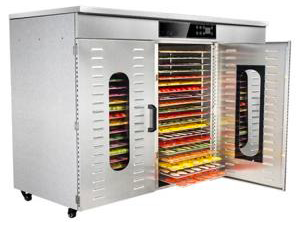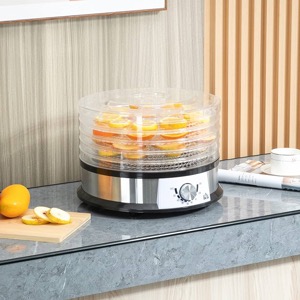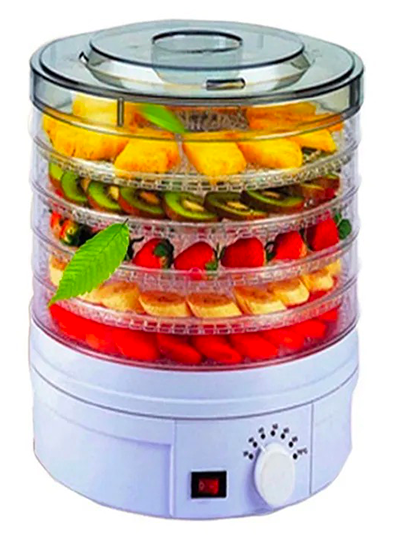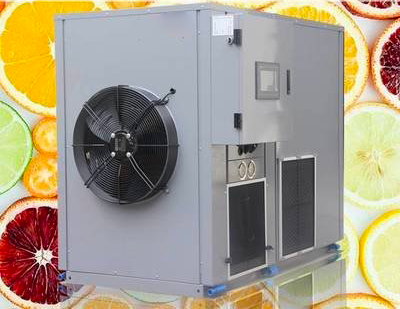
Content Menu
● Introduction to Heat Pump Drying Technology
● How a Heat Pump Dryer Works
>> The Basic Principle of Heat Pump Drying
>> Step-by-Step Process of Heat Pump Drying
>> Efficiency and Control
● Advantages of Using Heat Pump Dryers for Food
>> Energy Efficiency
>> Preservation of Nutritional Value
>> Versatility in Applications
>> Reduced Risk of Over-Drying
>> Environmentally Friendly
● Applications of Heat Pump Dryers in Food Industry
>> Fruits and Vegetables
>> Meat Products
>> Snacks and Convenience Foods
● Detailed Process Flow in Heat Pump Drying
>> Pre-Treatment of Food Products
>> Monitoring and Control Systems
>> Post-Drying Handling
● Conclusion
● Frequently Asked Questions (FAQs)
>> 1. What types of food can be dried using a heat pump dryer?
>> 2. How does heat pump drying compare to traditional drying methods?
>> 3. Are there any limitations to using a heat pump dryer?
>> 4. How do I maintain a heat pump dryer?
>> 5. Can I use a heat pump dryer for commercial purposes?
Introduction to Heat Pump Drying Technology
Heat pump drying is an innovative and energy-efficient method widely used in the food industry for drying various products. This technology utilizes a heat pump to extract moisture from food items while maintaining their quality and nutritional value. In this article, we will explore how a heat pump dryer works, its advantages, applications, and the overall process involved in food drying.

How a Heat Pump Dryer Works
The Basic Principle of Heat Pump Drying
A heat pump dryer operates on the principle of thermodynamics, using a refrigeration cycle to transfer heat from one place to another. The process involves several key components:
- Evaporator: This component absorbs heat from the environment or the air inside the dryer. As moisture evaporates from the food, it cools down the air, which is then drawn into the evaporator.
- Compressor: The compressor increases the pressure of the refrigerant gas, raising its temperature. This gas is then sent to the condenser.
- Condenser: Here, the hot gas releases its heat to the air or directly to the food product being dried. As it cools down, it condenses back into a liquid state.
- Expansion Valve: This valve reduces the pressure of the refrigerant liquid before it returns to the evaporator, completing the cycle.
Step-by-Step Process of Heat Pump Drying
1. Loading the Dryer: Food products are placed on trays within the drying chamber. The design of these trays allows for optimal airflow around each item.
2. Air Circulation: A fan circulates air within the chamber, ensuring even distribution of temperature and humidity levels.
3. Moisture Evaporation: As air passes over the food items, moisture is absorbed and carried away by the circulating air.
4. Heat Exchange: The evaporator absorbs heat from this moist air, causing it to cool down and condense. The moisture is then collected in a reservoir.
5. Reheating Air: The compressor raises the temperature of the refrigerant gas, which is then sent to the condenser where it releases heat back into the drying chamber.
6. Continuous Cycle: This cycle repeats until the desired moisture content is reached in the food products.
Efficiency and Control
Heat pump dryers are known for their ability to recover latent and sensible heat by condensing moisture from the drying air. This recovered heat is recycled back into the dryer through heating of dehumidified drying air, substantially increasing energy efficiency compared to conventional dryers. By controlling both moisture and temperature of the air within the system, heat pump dryers can improve product quality while using less energy.
Advantages of Using Heat Pump Dryers for Food
Energy Efficiency
One of the most significant benefits of heat pump dryers is their energy efficiency. They use less energy compared to traditional drying methods because they recycle heat within the system. This results in lower operational costs and reduced environmental impact.
Preservation of Nutritional Value
Heat pump drying operates at lower temperatures compared to conventional drying methods. This helps preserve essential nutrients, flavors, and colors in food products, making them more appealing to consumers.

Versatility in Applications
Heat pump dryers can be used for a wide range of food items, including fruits, vegetables, herbs, and meats. Their adjustable settings allow manufacturers to customize drying processes based on specific product requirements.
Reduced Risk of Over-Drying
With precise control over temperature and humidity levels, heat pump dryers minimize the risk of over-drying or damaging food products during processing.
Environmentally Friendly
By utilizing renewable energy sources and reducing greenhouse gas emissions, heat pump dryers contribute to sustainable practices in food processing.
Applications of Heat Pump Dryers in Food Industry
Fruits and Vegetables
Heat pump dryers are ideal for drying fruits and vegetables while retaining their natural colors and flavors. Common applications include:
- Dried apples
- Raisins
- Dried tomatoes
- Dehydrated herbs
These products not only retain their nutritional value but also have extended shelf lives due to reduced moisture content.
Meat Products
The meat industry also benefits from heat pump drying technology. It allows for effective moisture removal while preserving taste and texture:
- Jerky
- Dried fish
- Sausages
Using low-temperature drying helps maintain quality without compromising safety standards.
Snacks and Convenience Foods
Many snack foods can be produced using heat pump dryers:
- Vegetable chips
- Fruit snacks
- Instant soups
The ability to control temperature ensures that snacks retain their crunchiness without excessive oil or additives.
Detailed Process Flow in Heat Pump Drying
Pre-Treatment of Food Products
Before entering the heat pump dryer, certain food items may require pre-treatment processes such as blanching or slicing. These steps help enhance drying efficiency by reducing initial moisture content or increasing surface area for evaporation.
Monitoring and Control Systems
Modern heat pump dryers are equipped with advanced monitoring systems that track temperature and humidity levels throughout the drying process. These systems ensure that optimal conditions are maintained consistently, resulting in uniform drying across all trays.
Post-Drying Handling
Once dried, products often undergo cooling before packaging. This step prevents condensation inside packaging materials that could lead to spoilage or quality degradation during storage.
Conclusion
Heat pump drying technology represents a significant advancement in food processing methods. By understanding how a heat pump dryer works and its numerous benefits, manufacturers can make informed decisions about adopting this technology for their operations. With its energy efficiency, versatility, and ability to preserve nutritional value, heat pump dryers are becoming increasingly popular in various sectors of the food industry. As consumer demand for high-quality dried foods continues to grow, investing in heat pump technology may be a strategic move for businesses looking to enhance their product offerings while minimizing environmental impact.

Frequently Asked Questions (FAQs)
1. What types of food can be dried using a heat pump dryer?
Heat pump dryers are versatile and can be used for a wide range of foods including fruits, vegetables, meats, herbs, and snacks.
2. How does heat pump drying compare to traditional drying methods?
Heat pump drying is more energy-efficient and operates at lower temperatures than traditional methods, preserving more nutrients and flavors in food products.
3. Are there any limitations to using a heat pump dryer?
While heat pump dryers are highly efficient, they may have longer drying times compared to some conventional methods due to their lower operating temperatures.
4. How do I maintain a heat pump dryer?
Regular maintenance includes cleaning filters, checking refrigerant levels, and ensuring proper airflow within the system for optimal performance.
5. Can I use a heat pump dryer for commercial purposes?
Yes, many manufacturers offer industrial-sized heat pump dryers designed specifically for commercial applications in various food processing industries.












